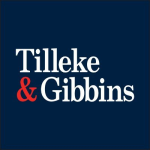For years, an inadequate compensation mechanism has been a limitation in resolving IP infringement disputes in Vietnam through civil measures. This limitation was once again highlighted in an appellate trial at the Superior People’s Court of Ho Chi Minh City on February 21 2022, in which the appeal court reviewed a judgment of the People’s Court of Ho Chi Minh City dated April 28 2021.
Outline of the case
The facts of the case are quite simple. A Ho Chi Minh City-based company that provides educational equipment was discovered by the Inspectorate of the Ministry of Culture, Sports and Tourism to be using, without authorisation, a specialised computer program from a company based in the United States.
The inspection agency decided to issue an administrative sanction against the Vietnamese company. The sanction included a fine of VND30 million (approximately $1,315) and the forced removal of the infringing computer program, which the infringer readily complied with. Thus, the administrative aspect of the case was completed.
The company behind the software then filed a civil case against the infringer at the People’s Court of Ho Chi Minh City. Among the plaintiff’s claims, the most important was the amount of compensation for damages: over $500,000, equivalent to the value of the full-module computer program that was found to be illegally installed and copied on the defendant’s computer.
In fact, the plaintiff has sold software licences for this full module version through resellers in Vietnam for the same amount. In addition to claiming compensation for damages, the plaintiff also demanded the defendant make a public apology and pay an additional VND300 million to cover the plaintiff’s legal fees.
Court judgments
The first instance court determined that the defendant had indeed infringed the IP rights of the plaintiff and required the defendant to make a public apology. But it rejected the plaintiff’s entire claim for damages on the ground that the plaintiff was unable to prove the damages it had suffered, such as loss of property, decrease in income, profits or business opportunities (Article 204.1(a) of the Law on Intellectual Property).
Disagreeing with the first-instance judgment, the plaintiff appealed the case to the Superior People’s Court of Ho Chi Minh City. The appeal judgment upheld the first instance judgment on February 21 2022.
The contents of both the first instance and appeal judgments show that both levels of the court have a very conservative way of understanding and applying the law: they did not accept the plaintiff’s claim that the damages could be calculated based on the loss of business opportunities, namely the possibility to sell that very computer program to the defendant for an amount equivalent to the price other customers in the same market had previously paid.
Proving damages
In practice, it is impossible to mechanically require plaintiffs to prove damages in the same way for different IP rights. If viewed only in terms of annual income and profits, it is entirely possible that both the income and profits of the plaintiff will not decrease but may even increase in the year the violation occurs. In addition, it is extremely difficult, if not impossible, to prove a direct connection between an increase or decrease in the income and profits of the plaintiff, which is a Nasdaq-listed business with billions of dollars in sales, and a single software infringement case in Vietnam.
It is impossible to prove damages through profits gained by the defendant from the use of an unauthorised computer program when the plaintiff has no access to the defendant’s financial figures and governance documents. It is also impossible to dissect in detail how much revenue or profit the use of a particular computer program has generated for the defendant among dozens of factors that can affect these indicators.
The simplest and fairest approach, then, is to calculate the damages based on the value of the computer program itself, when it has been sold to similar customers. As a parallel, when a thief steals a luxury car instead of purchasing it from the dealer, the damage can be considered to be the price that consumers have paid for the car in the locality where the theft occurred. In fact, this approach is already prescribed by the current IP Law of Vietnam.
Under Article 205.1(a) and (b), when a plaintiff can prove that an act of IP infringement has caused material damage, it can request the court to decide the level of compensation based on one of the following grounds:
a) The total material damage calculated as a monetary amount, plus the profits gained by the defendant as a result of the IP infringement if reduced profits of the plaintiff have not yet been included in the total material damage; or
b) The licensing price for the IP object, on the assumption that the plaintiff had transferred the IP usage right to the defendant under a licence agreement with a scope corresponding to the act of infringement committed.
If the plaintiff has the right to choose the basis for compensation, then the court is obligated to consider this basis. In this case, the court made fundamental mistakes in its interpretation and application of the law, leading to a case with fairly simple details being tried in a wrong and completely different direction than reality would dictate.
The plaintiff in this case is now requesting the Supreme Court to review the case according to cassation procedures. These aim to correct errors in the interpretation and application of the law in the judgments of lower courts.
It is hoped that the correct analysis of the grounds for compensation for damages in intellectual property cases will be properly considered by the Supreme Court.
Loc Xuan Le
Principal, T&G Law Firm LLC (TGVN), local associate firm of Tilleke & Gibbins











